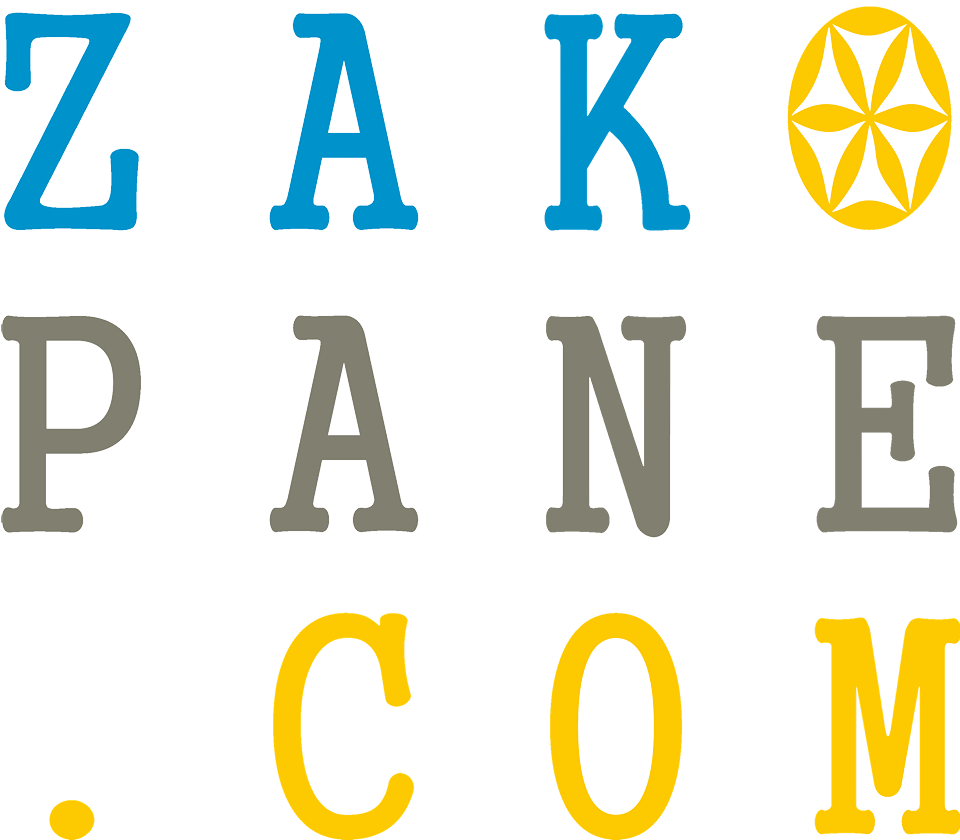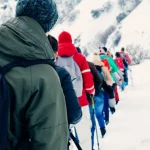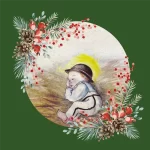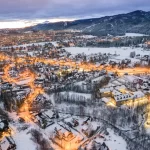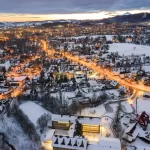TOPR – 110 years of heroism
TOPR – 110 years of heroism
If today, an accidentally met inhabitant of Zakopane would say which institution enjoys the greatest respect in the city, he will answer without hesitation – TOPR. The Tatra Volunteer Search and Rescue brings together unusual people in the same way as it is unusual what they do – they risk their health and life to save other people. This year, the 110th anniversary of TOPR is celebrated in Zakopane. On the occasion of the holiday of lifeguards and mountain guides, on August 10, we want to bring a little closer to the activities of this organization, which everyone in Zakopane will hear about. Fortunately, not everyone will benefit from her help. Most of them only observe the characteristic, white and red “Sokol” (Falcon) helicopter circling over the city and mountains even several times a day.
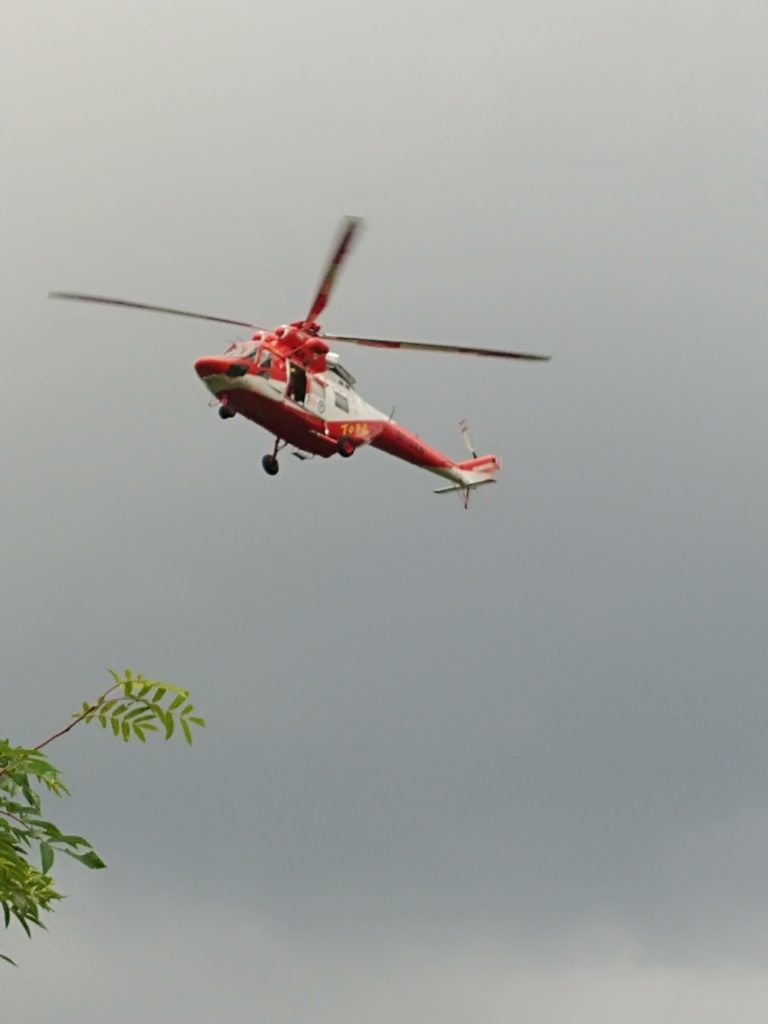
A bit of history
The Tatra emergency service was the fourth organization of this type in the world and the first non-Alpine. Before that, they were created in Austria in 1886, in France in 1887 and in Switzerland in 1902. Even earlier, two mountain monasteries in the Alps served as rescue units, funded by Saint Bernard of Menton, who joined the Augustinian order in 962 and implemented the idea of guest monasteries similar to our present shelters, where rescuers are also stationed. Even before TOPR officially began its activity, there were 8 rescue expeditions as part of the Rescue Service – for the first time the tourist was saved in the Buczynowe Turnie, and the expedition was commanded by Mariusz Zaruski, a famous mountaineer, as well as a sailor, artist and traveler. Already in 1907, the need to create an organized rescue institution was discussed, Zaruski and the composer Mieczyslaw Karlowicz were the people who particularly sought it. The latter, unfortunately, did not wait for help when an avalanche buried him at Maly Koscielec on February 8, 1909. He was an avid skier, mountaineer, took beautiful photos of the Tatra Mountains, worked in the Tatra Society. His early death – he was only 32 years old – accelerated the efforts of the people connected with the mountains at the time to establish TOPR. Finally, the governor in Lviv approved the status of the organization on October 29, 1909. On December 11, the board of the organization was elected and the first eleven rescuers gave the pledge – today they still give it in the same form. The first president was Kazimierz Dluski, while the first head of the guard himself Mariusz Zaruski, and his deputy – Klemens (Klimek) Bachleda, called the king of Tatra guides. Jan Krzysztof has been the head for 21 years. Temporarily, from 1956 Zakopane rescuers operated under the name Tatra Group GOPR becoming a branch of a nationwide organization. But in 1991 it returned to its original name.
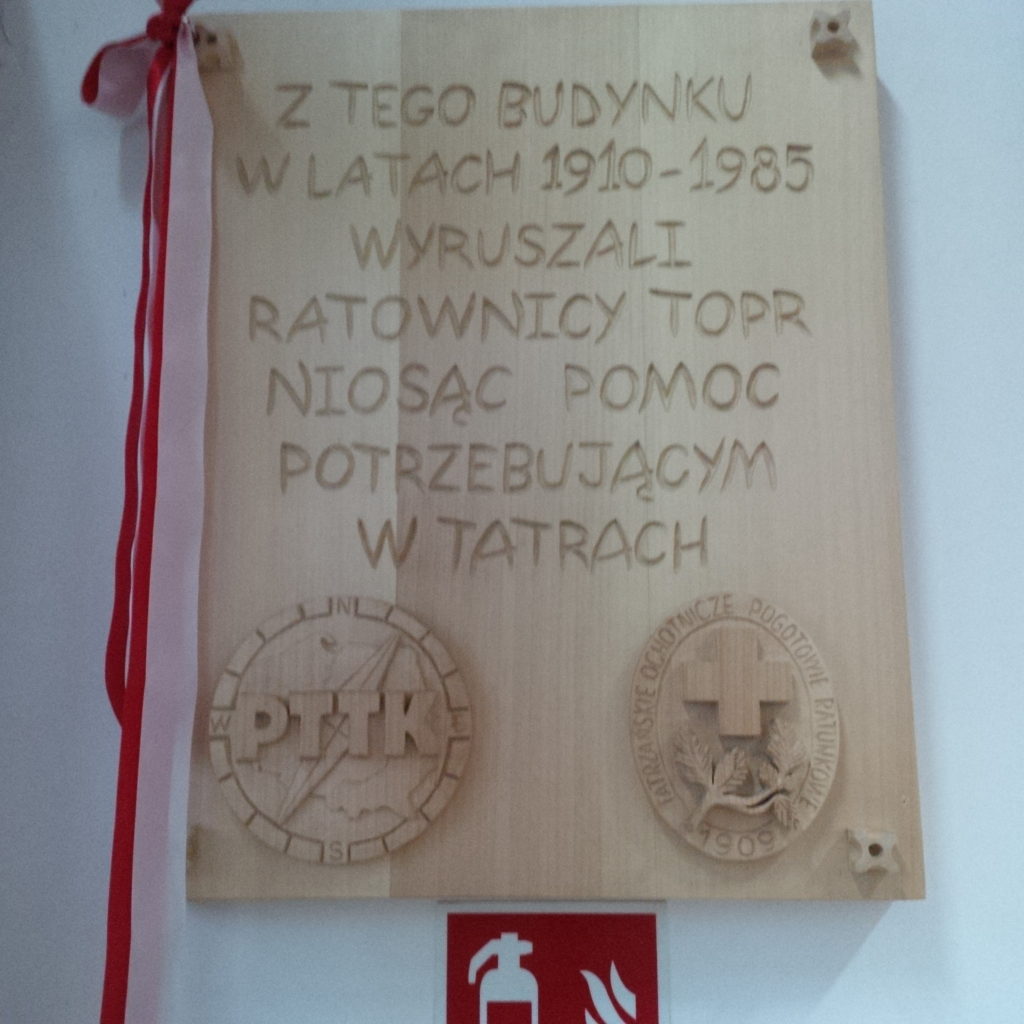
Chronicle of heroic death
It was Klimek Bachleda, an outstanding mountain expert and Tatra guide, who was the first TOPR rescuer who died going to help another man. In 1910 he tried to save a student from Warsaw at the Maly Jaworowy Summit. Since then many lifeguards have died, and many more tourists and mountaineers, although fortunately many are saved. However, what astounds during a conversation with rescuers is the naturalness with which they talk about deadly accidents in the mountains. For them it is everyday life, a variant that they must take into account during each rescue operation. Those who live, know by heart the dates, places and circumstances of their colleagues’ deaths, visit the graves of those who, as rescuers say, left for the Heavenly Ridge. To honor their memory, they take part in the organization of sporting and cultural events, such as, for instance climbing competitions, the Memorial of Bartek Olszanski, who died under an avalanche in 2001. But this memory is not only among the rescue fraternity. It is common among Zakopane residents, for whom the rescuer is a brother, neighbor, bandmate or a well-known hospital doctor. Even when they die, they still live in the memory of loved ones who try save the memory – like the widow of Marek “Maja” Labunowicz, whose Majowe Granie Foundation supports the development of young artistic talents in Podhale. He himself was not only a lifeguard, but also a talented musician, and died in one of the most tragic actions at Szpiglasowa Col, when during a trip to the bodies of tourists buried in an avalanche a second avalanche came.
Respect and understanding
Walking in the mountains. Pleasure? Challenge? Necessity? Apparently people are divided into those who do not need any explanation of this passion and those who will never understand it – as the famous climber Piotr Pustelnik said. TOPR rescuers are definitely in the first group. They do not ask questions “why did you go there”, they do not judge hastily and rashly – what happens to Internet users in various forums. In their eyes, above all, understanding can be seen, although they often have to face with the mindless and reckless behavior of those they save. What they don’t like is disrespect, because they have this to themselves and to colleagues. Still fighting to save someone else’s life, they also value theirs own.

TOPR is not a taxi!
Most often, this lack of respect is manifested in the claims attitude of tourists, who have no ailments, or they are minor – but they have sky-high demands. Unfortunately, there are cases when an ambulance helicopter is confused with a taxi, impetuous woman frighten by phone the dismissal of the rescuer on call from work, if the helicopter does not appear immediately to give a lift for tired husband whose legs hurt … There are tourists who are really drunk, who are unable to walk down in the mountains on their own. Or those who got lost (!) on the asphalt road to Morskie Oko in the winter after dusk … In such cases, of course, it happens that the duty rescuer refuses to send a helicopter. Sometimes just a warning, that you will have to wait for help, because the action is taking place elsewhere, is enough – and suddenly the tourist gathers strength and wants to continue the trip on his own. So let’s say it once again and clearly – the helicopter is an invaluable help in the work of rescuers, since 1963, when the first successful flight took place, it accompany them practically every day. But it is the duty rescuer who assesses the risk and the need to send it, not the tourist. Who wants to fly over the Tatras, can look on the Internet for commercial offers of flights by plane and although they do not fly over the mountains, such permission is rarely only granted to gliders, he will take a look at the mountains from above. But – it’s just not for free.
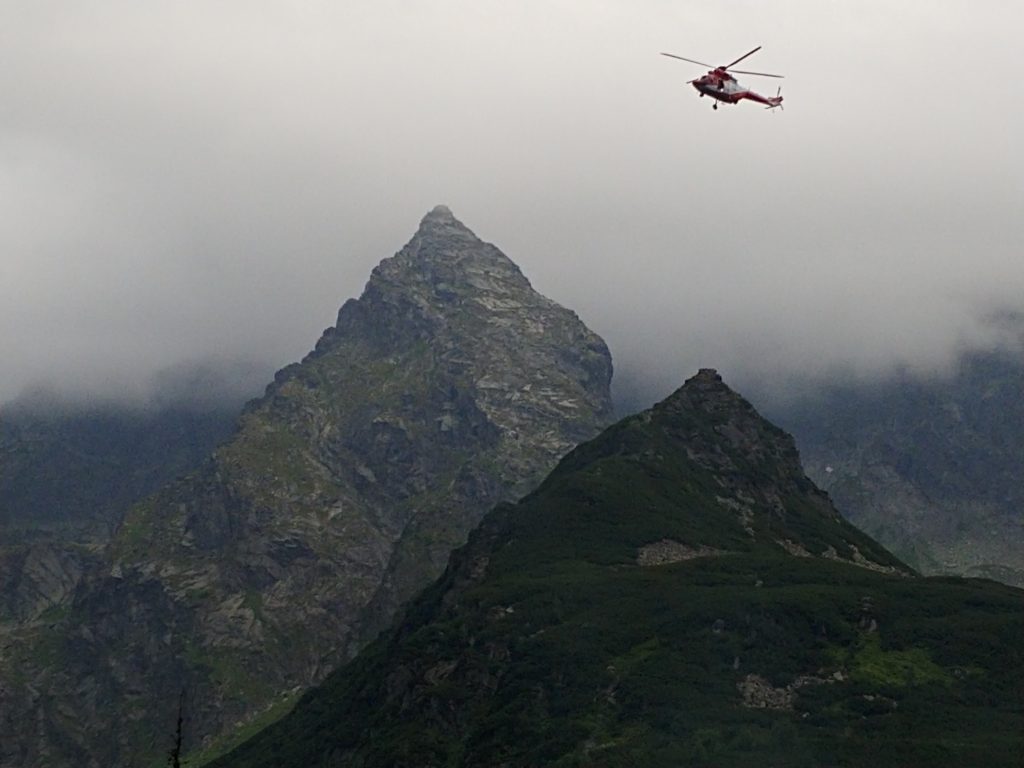
He should pay!
Since we are in finances, the subject of payments for rescue operations in the Tatra Mountains often appears in various forums. Many people argue that actions taken as a result of tourist’s “stupidity” should be paid with their own money. Awareness of paying for an action would supposedly increase responsibility and reduce reckless behavior. We can see how this system works, by the example of driving tickets or prison sentences for thieves. Anyone who wants to risk will do it – no matter what the consequences are. TOPR-men themselves, with the leader at the head, are generally opposed to the idea of paid actions. They remind that even in Slovakia – whose example is often cited, because there the actions are paid of tourist’s money, if he did not take out insurance – the revenues from them cover only 8 percent of the cost of operating an ambulance. They also argue that in many other countries, rescue is free or only partially paid. And in Poland – if a helicopter is used to help after a car accident, nobody will demand payment from the victim. In the Tatra Mountains, the fee is hidden in the admission ticket to the Tatra National Park, part of the funds go to TOPR. They are not enough for maintenance, so sponsors or commercial activities related to securing events are necessary. Free actions have one more important aspect – they prevent “pay and demand” situations and requests to take action using a helicopter when it is not necessary or even impossible due to very difficult weather conditions. The helicopter does not fly in the fog or in the dark. By the way – it is very difficult to assess what is “stupidity” and what is an unfortunate accident – these even occur to experienced climbers.
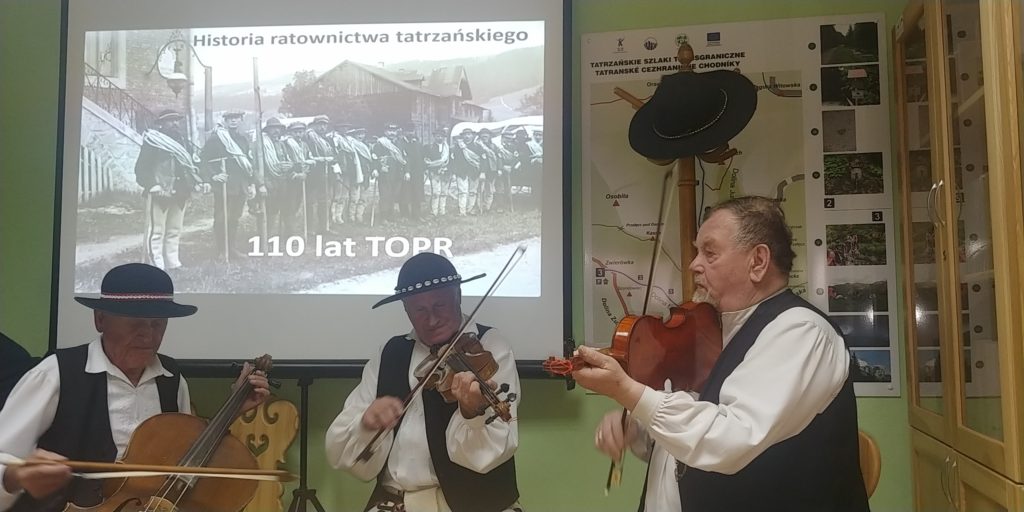
Strength is in equipment?
Looking at old photos from the early days of the Tatra emergency service, one can get the impression that the heroes of that time started to help almost with bare hands. Coil of rope, ice ax, sometimes crampons. The bodies of the victims of the mountains were carried in nets attached to long sticks, the so-called bamboo. No vibram shoes, fleece jackets or goretex. They had no helmets, no harness, and the rope tied around the torso – sometimes miraculously avoiding an accident when the knot loosened. It is hard to imagine that even in the 90s of the twentieth century, rescuers went to the mountains with torches, because when even headlamp flashlights appeared, their batteries could not withstand the cold. Therefore, many actions, requiring climbing, descending on the rope, could not be taken at night, waiting for the day. Today, a lot has changed. Our emergency service not only has great equipment and knowledge on how to use it, but also has a significant impact on the development of methods to help victims of mountain accidents. An invaluable specialist is, among others TOPR chief doctor, Sylweriusz Kosinski, creator (together with Tomasz Darocha) of the Deep Hypothermia Treatment Center, who developed a new, extracorporeal method for pulling out patients from hypothermia and the entire system of action in such cases. Of course, there is never too much good, light and reliable equipment, hence appeared the idea of a spontaneously organized fundraising on one of the portals of Tatra enthusiasts – after a successful action rescuers could make large purchases.
What do they get from it?
Everyone who knows the TOPR environment better, knows that rescuers are symbolically paid for their work. Potentially they will not die of starvation, but having family and children in college – they can’t survive. Not to mention that it would be a dignified remuneration for the hardship and dangerous nature of work. So, the men undertake various activities, they are practically at work 7 days a week, they are often mountain guides, the aforementioned Sylweriusz Kosinski, an anesthesiologist, is an employee of the hospital, and some rent rooms to tourists. Rescuers are only by name volunteers, among almost 300 people many are professional rescuers, the majority of them train at their own expense, raise their qualifications to the highest level in Europe. To become a Tatra rescuer, each candidate undergoes a probationary period of 1.5 to 3 years. They need to know the topography of the Tatras, can climb, ski, have skills in cave penetration and diving, and, of course, they must know how save people and give first aid. There are also professional doctors and pilots who fly the helicopter. They also need courage, prudence, high resistance to pain, cold and fatigue, and good health in general. And also willingness to cooperate, the ability to act in a group, to respect hierarchy, but also to act independently. It is a pity that the exceptional traits of the character of the rescuers, their honor, internal passion to help people – are used by the authorities, which miser TOPR pay rises, regardless of the current political option. The scandal is raising the retirement age of lifeguards from 55 to 65 years. Seniors, yes, they are mostly impressive in shape at first glance, they are slim, athletic, they wear sport shoes, clothes and backpacks as they did for many years. But they are just as human, their muscles and bones age, their resistance strength cannot be compared with that of young people who are just beginning their adventure with rescue. However, what is noticeable at first glance, there is some strength in the rescuers, maybe a bit of pride, a large dose of humility towards the mountains, but also self-confidence. They are also surprisingly cheerful, many of them believe in the protection of Providence, which many times allowed them to avoid death. During the anniversary meetings, on the occasion of various celebrations, they do not deny themselves a portion of home-made tincture, they like to joke and see if as seniors they still impress ladies. This is undoubtedly one of the nicer sides of the profession – the adoration and respect they have. Although, excessive attention of ladies can be embarrassing when the wife is jealous and watchful.

That you could survive
It is worth mentioning that what is necessary for rescuers to help us or someone in the event of an accident is a charged mobile phone. The number to call is +48 601-100-300. It’s also a good idea to install the free “rescue” application on your smartphone, which will allow you to locate your phone. More information at www.ratunek.eu. However, you should remember to use it only in the event of an accident and not send mistakenly dozens of reports from Cracow f. ex – what happened when the telephone got into the hands of a child. There are always two issues to consider. To what extent does our situation require intervention and does someone else need help more? And the other, in a way the reverse – are we sure that we will manage alone? Sometimes, in order not to get into more trouble, just call. Between the lack of intervention and the action using a helicopter, there are still intermediate variants. Like giving directions over the phone on how to turn back in the event of a lost track. Or instructions on how to behave in the event of sudden weakness. Let’s also read the boards placed at the entrance to the trails of the Tatra National Park. Reading them will take us two minutes, and it can be very useful. Above all, however, let’s check the weather messages, preferably on many portals simultaneously, and we can start from the TOPR website. Let’s read with understanding – the fall of dusk means not only darkness, but also significant cooling. Fog – very poor visibility. Strong wind heralds perceptible temperature much lower than the real, while the cloudless sky will take effect of much higher. Let’s follow – and let’s respect! – TOPR avalanche messages. And every day, when we go on a trip to the mountains, let’s ask ourselves whether the goal we chose is not too difficult technically, or demanding condition. It can happen to everyone that has a weaker day. Then, it is better to let go of a difficult route, find an easy one, or choose something from countless attractions of Zakopane and the surrounding areas, about which we also write a lot on our website. It is also worth taking a look at the articles: “ Safety in the mountains in winter” , “As many ascents – that many descents“ and “Tatra savoir-vivre” to read more about safety in the mountains. However, if, despite all our prudence, an accident occurs to us, we should remember that calling for help from TOPR we will be in the best hands.
Anna Markiewicz
